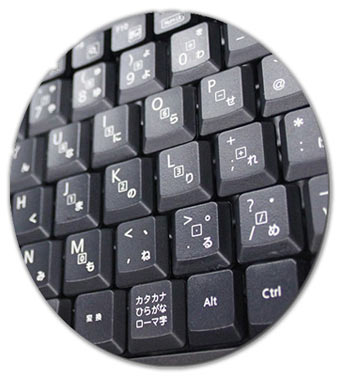I remember when I first started learning Japanese, I wondered how Japanese text entry could work on a computer. I pictured some horrible keyboard with hundreds of keys, but in reality, Japanese computers use the same QWERTY keyboards as everyone else (though often with cool katakana characters printed on the keys). Japanese input is accomplished through a front-end processor, basically a program that ships with Windows and Mac OS X (and iPhone/iPad) that handles converting your text into the correct mix of hiragana, katakana and kanji before it’s pasted into your document or email. With Japanese text input selected, you type some text with the keyboard — for example, aoi sora which means “blue sky.” Hit the space bar, and the computer will convert the text you’ve just typed into the kanji/kana combination it thinks you want, although sometimes problems can occur here, as there are often alternate or archaic kanji in the computer’s dictionaries, and it can be hard to know which to choose. When you get used to the system, you can enter Japanese text quite quickly, although there’s a downside — entering Japanese into a computer becomes so easy that it’s easy to forget how to write kanji manually.

Dude, there’s katakana on the computer keys.














